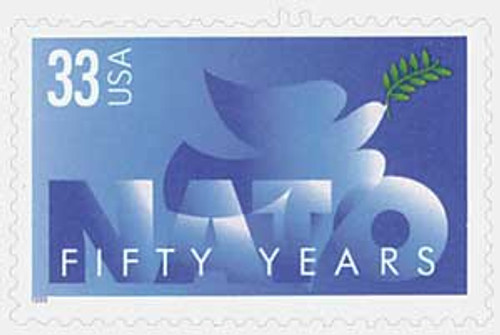
# 3354 - 1999 33c NATO
City: Brussels, Belgium
Quantity: 44,600,000
Printed By: Ashton-Potter (USA) Ltd
Printing Method: Lithographed
Perforations: 11.25
Color: Multicolored
Founding Of NATO
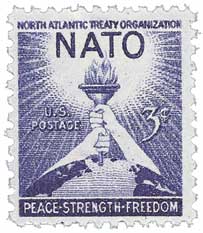
On April 4, 1949, twelve countries signed the North Atlantic Treaty, forming the North Atlantic Treaty Organization (NATO).
The stability of world politics took a dramatic turn at the end of World War II. With the Soviet Union gaining control in Europe, military strength became a leading concern among non-Communist countries that feared they would be unable to defend against Soviet aggression.
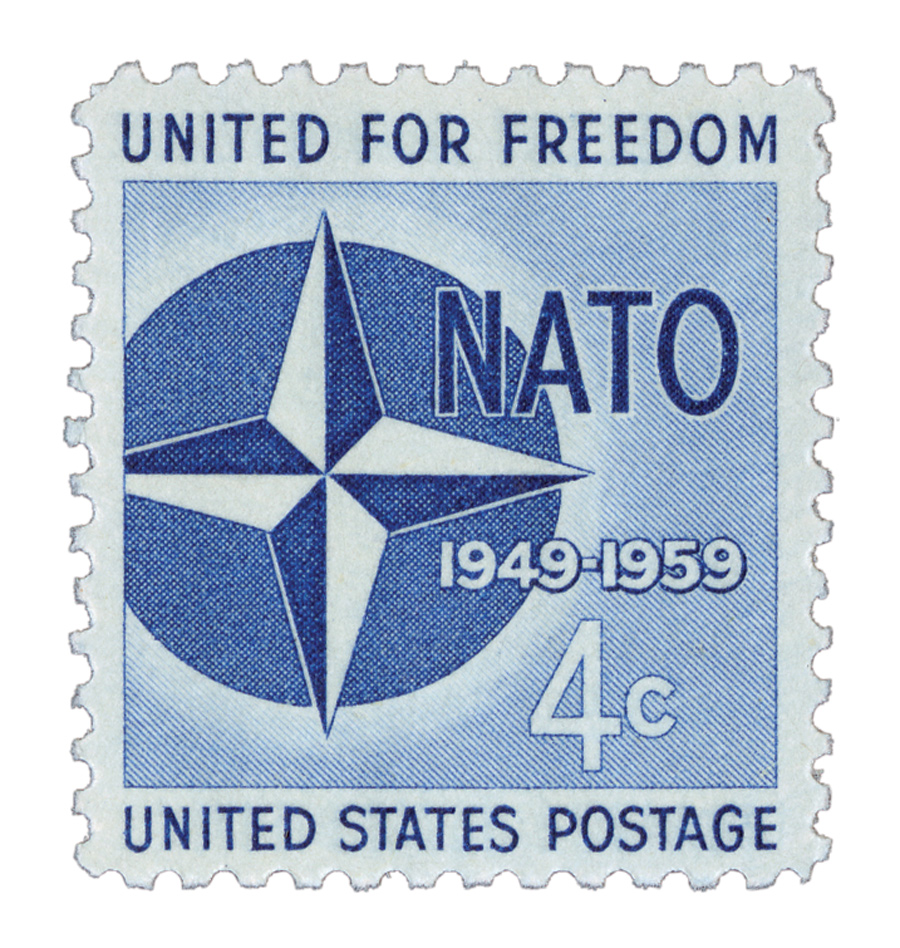
On March 17, 1948, Belgium, the Netherlands, Luxembourg, France, and the United Kingdom signed the Treaty of Brussels. This treaty expanded on the defense pledge of the Dunkirk Treaty of the year before. Three months later the Soviets began their blockade of Berlin, blocking supply routes to the area of Berlin under Western control. This led to the formation of the Western Union Defense Organization in September 1948. Realizing the military strength of the United States would be necessary to stop a potential communist attack, talks began for a new alliance.
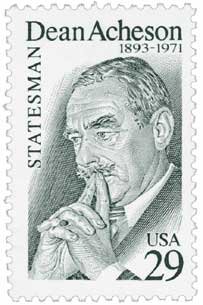
So in 1948 European leaders traveled to the United States to meet with American military leaders and diplomats to discuss a new treaty. They met with President Harry Truman’s Secretary of State, Dean Acheson, who largely designed the resulting North Atlantic Treaty, which was signed on April 4, 1949, in Washington, D.C. The participating nations were Belgium, Canada, Denmark, France, Great Britain, Iceland, Italy, Luxembourg, the Netherlands, Norway, Portugal, and the United States.
Member nations agreed to maintain a unified military force to defend against Soviet invasion, and pledged to consider an attack on one as an attack on others. NATO’s first secretary general stated the organization’s goal as “keep the Russians out, the Americans in, and the Germans down.”
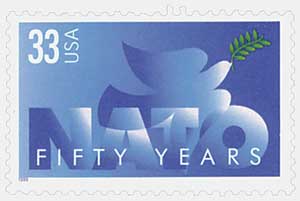
The Korean War was the first test of the alliance. Though it was not on the soil of any NATO country, it demonstrated the threat of communist expansion. The organization responded with a military plan establishing the Supreme Headquarters Allied Powers Europe (SHAPE) as the command structure. Sixteen U.N. countries joined South Korea in its fight to stop the advance.
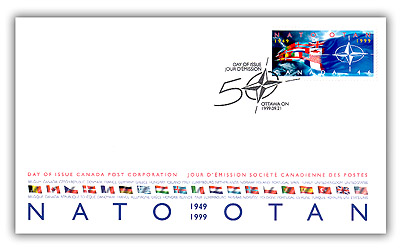
In 1954, the Soviet Union asked to join NATO to ensure peace in Europe. Seen as a ploy to weaken the alliance, the country’s request was rejected. The following year, the Soviets joined with seven other communist nations to form the Warsaw Pact. This led to two opposing sides during the Cold War. After communism fell in 1989, NATO sought to improve relationships with former Warsaw Pact countries.
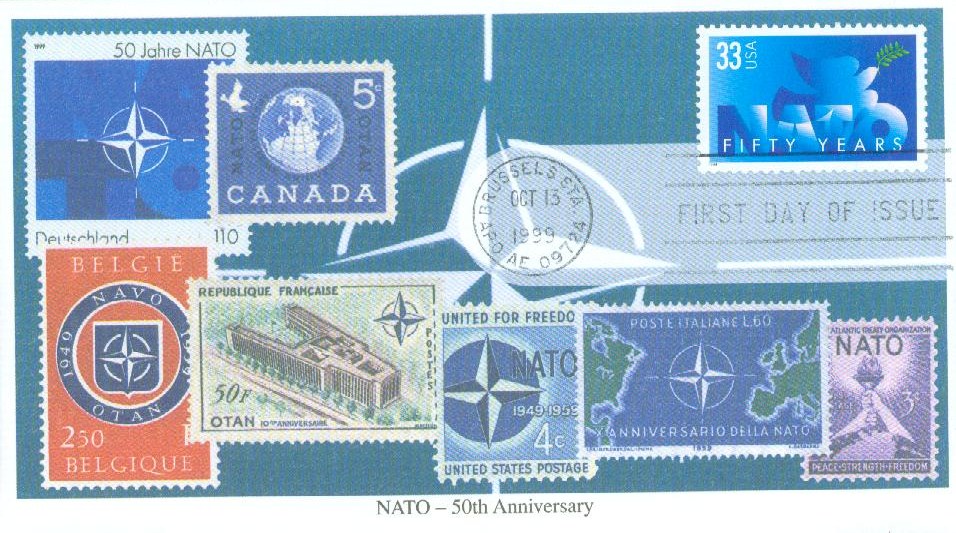
Though NATO was established to provide mutual military support, the combined forces were never called upon to fight the communists on European or American soil during the Cold War. Most of NATO’s money and troops have come from the U.S., which has greatly increased American influence in Europe. Past NATO commanders have included generals Dwight D. Eisenhower and Alexander Haig. Today, NATO consists of the twelve original member nations plus 16 that have been added since then. This includes former members of the Warsaw Pact, with some of the new NATO members formerly part of the Soviet Union. The organization’s headquarters are in Brussels, Belgium.
Click here to read the North Atlantic Treaty.
City: Brussels, Belgium
Quantity: 44,600,000
Printed By: Ashton-Potter (USA) Ltd
Printing Method: Lithographed
Perforations: 11.25
Color: Multicolored
Founding Of NATO

On April 4, 1949, twelve countries signed the North Atlantic Treaty, forming the North Atlantic Treaty Organization (NATO).
The stability of world politics took a dramatic turn at the end of World War II. With the Soviet Union gaining control in Europe, military strength became a leading concern among non-Communist countries that feared they would be unable to defend against Soviet aggression.

On March 17, 1948, Belgium, the Netherlands, Luxembourg, France, and the United Kingdom signed the Treaty of Brussels. This treaty expanded on the defense pledge of the Dunkirk Treaty of the year before. Three months later the Soviets began their blockade of Berlin, blocking supply routes to the area of Berlin under Western control. This led to the formation of the Western Union Defense Organization in September 1948. Realizing the military strength of the United States would be necessary to stop a potential communist attack, talks began for a new alliance.

So in 1948 European leaders traveled to the United States to meet with American military leaders and diplomats to discuss a new treaty. They met with President Harry Truman’s Secretary of State, Dean Acheson, who largely designed the resulting North Atlantic Treaty, which was signed on April 4, 1949, in Washington, D.C. The participating nations were Belgium, Canada, Denmark, France, Great Britain, Iceland, Italy, Luxembourg, the Netherlands, Norway, Portugal, and the United States.
Member nations agreed to maintain a unified military force to defend against Soviet invasion, and pledged to consider an attack on one as an attack on others. NATO’s first secretary general stated the organization’s goal as “keep the Russians out, the Americans in, and the Germans down.”

The Korean War was the first test of the alliance. Though it was not on the soil of any NATO country, it demonstrated the threat of communist expansion. The organization responded with a military plan establishing the Supreme Headquarters Allied Powers Europe (SHAPE) as the command structure. Sixteen U.N. countries joined South Korea in its fight to stop the advance.

In 1954, the Soviet Union asked to join NATO to ensure peace in Europe. Seen as a ploy to weaken the alliance, the country’s request was rejected. The following year, the Soviets joined with seven other communist nations to form the Warsaw Pact. This led to two opposing sides during the Cold War. After communism fell in 1989, NATO sought to improve relationships with former Warsaw Pact countries.

Though NATO was established to provide mutual military support, the combined forces were never called upon to fight the communists on European or American soil during the Cold War. Most of NATO’s money and troops have come from the U.S., which has greatly increased American influence in Europe. Past NATO commanders have included generals Dwight D. Eisenhower and Alexander Haig. Today, NATO consists of the twelve original member nations plus 16 that have been added since then. This includes former members of the Warsaw Pact, with some of the new NATO members formerly part of the Soviet Union. The organization’s headquarters are in Brussels, Belgium.
Click here to read the North Atlantic Treaty.

